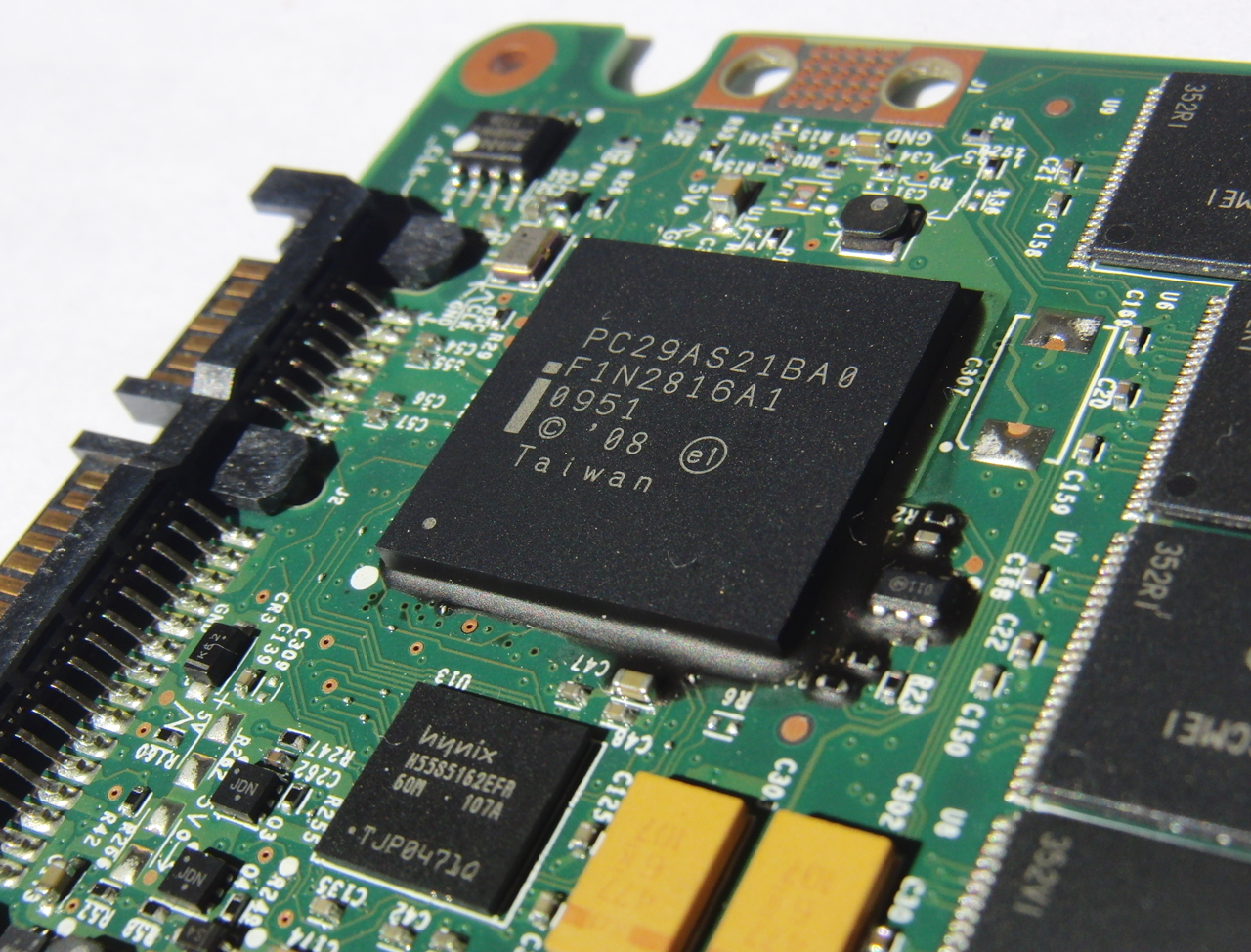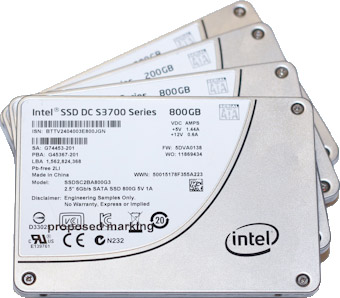Intel SSD DC S3700 Review: Benchmarking Consistency
With the recent announcement of the SSD DC S3700, Intel is firmly targeting enterprise customers with something not normally seen on spec sheets: performance consistency. Will their latest offering live up to expectations, or fall short? Lets find out.
The SSD DC S3700: Meet Intel's Flagship Enterprise SSD
Intel took a long and winding road to get to its SSD DC S3700. When the company launched its X25-E almost four years ago (oh yeah, we were there: Intel’s X25-E SSD Walks All Over The Competition), it outperformed pretty much everything on the market. A home-grown 3 Gb/s controller, 50 nm SLC NAND, unprecedented write endurance, and amazingly consistent performance were all cutting-edge at the time. To this day, the X25-E remains one of our favorite enterprise drives.
Available capacities were small, though, and the drive was extremely expensive throughout its life. Of course, that didn't matter to many of the companies that bought X25-Es, since performance and reliability compared to the competition were outstanding. That advantage was attributable to the fact that Intel not only wrote its own custom firmware, but also designed the controller itself.
From that point on, though, Intel's storage team didn't come up with anything nearly as groundbreaking. On the NAND side, the company abruptly switched from SLC to HET-MLC in its enterprise-oriented drives. The first X25-E successor, SSD 710, was promising, but suffered a few major flaws. Its controller was simply a revised version of the 10-channel design the company had used for years.
Although its performance was close to that achieved by the venerable X25-E, the SSD 710 surfaced at a time when 6 Gb/s drives were the norm, so its results came across fairly underwhelming. It simply didn't have any other controller options to fall back on. Intel chose to partner with Marvell and then SandForce for its 6 Gb/s client-oriented SSDs. But once it leaned on those other vendors, no amount of firmware tweaking was enough to distinguish its product from other companies using the same ASICs.
And while the SSD 710's HET-MLC flash offered a good compromise between performance, capacity, and endurance, the NAND technology was too expensive. As a result, Intel's enterprise follow-up didn't really differentiate itself in a segment that had become increasingly competitive. The company needed to start over, go back, and do what it does best: innovate.
Meet The SSD DC S3700
It's amazing how much can change in one year. The introduction of Intel's SSD DC S3700 appears to right much of what was wrong with the SSD 710. Equipped with a new eight-channel controller of its own design and mature 25 nm HET-MLC NAND, the company has a much more compelling enterprise-oriented offering, at least on paper.
Get Tom's Hardware's best news and in-depth reviews, straight to your inbox.
The SSD DC S3700 is available at four capacity points in a 2.5" form factor (100, 200, 400, and 800 GB), and two capacity points in a 1.8" design (200 and 400 GB). We'd expect 2.5" drives, but the 1.8" offerings are more of a surprise. We've seen vendors increasingly shy away from the smaller form factor. However, Intel claims there is a growing demand for them in the blade and micro-server markets.
| Intel SSD DC S3700 Series | ||||
|---|---|---|---|---|
| User Capacity | 100 GB | 200 GB | 400 GB | 800 GB |
| Interface | 2.5" 6 Gb/s SATA | 2.5"/1.8" 6 Gb/s SATA | 2.5" 6 Gb/s SATA | |
| Sequential Read | 500 MB/s | |||
| Sequential Write | 200 MB/s | 365 MB/s | 460 MB/s | 460 MB/s |
| 4K Random Read | 75,000 IOPS | |||
| 4K Random Write | 19,000 IOPS | 32,000/29,000 IOPS | 36,000 IOPS | 36,000 IOPS |
| Power Consumption (+5 V Active) | 2.8 W | 4.2 W | 5.2 W | 5.8 W |
| Power Consumption (+5 V Idle) | 0.6 W | |||
| Write Endurance | 1.83 PB | 3.65 PB | 7.3 PB | 14.6 PB |
| Encryption | AES-256 |
Although those vendor-supplied specifications aren't aggressive enough to knock Samsung's client-oriented 840 Pro from its perch, they do represent a significant improvement over the SSD 710. The SSD DC S3700 is expected to be 2x faster than its predecessor in random read operations, and 15x quicker in random writes. Sequential performance should also be more than twice as fast.
Those specs won't bowl over anyone current with SSD technology. More attention-grabbing was the pricing. When Intel introduced the SSD 710, it wanted something like $7/GB. Even the PCI Express-based SSD 910 launched a few months ago and equipped with the same 25 nm HET-MLC sells for ~$5.5/GB.
In contrast, the 2.5" SSD DC S3700 at 100, 200, 400, and 800 GB is priced at $235, $470, $940, and $1880, respectively. The 1.8" models are expected to command a roughly $25 premium at each capacity point. But that's only $2.35/GB. So, in the span of a year, what you pay per gigabyte of capacity dropped nearly 65%. Even though Intel is still asking almost two times what you'd spend on an 840 Pro, the SSD DC S3700 incorporates enterprise-oriented functionality you won't find anywhere else.
Current page: The SSD DC S3700: Meet Intel's Flagship Enterprise SSD
Next Page Inside Intel's SSD DC S3700-
merikafyeah Consistency and reliability are always more important to me than speed and capacity,Reply
but it's wonderful when you can have all four.
Kudos to Intel for raising the bar yet again on SSD quality. Eagerly awaiting trickle-down effect. -
InvalidError adgjlsfhkhow does ssd power consumption compare to an hhd's in watts per gigabyte?For conventional 3.5" HDDs, you have 5-8W idle, 10-15W seek and 15-25W spin-up.Reply
For 2.5" HDDs, you have ~1W idle and 2-2.5W seek/spin-up.
I'm a little surprised at how much power Intel's enterprise SSDs are using. I'm guessing a good chunk of the reason comes from having extra circuitry to do the double-conversion from 5/12V to ~30V and then back down to whatever the SSD needs. -
drewriley InvalidErrorFor conventional 3.5" HDDs, you have 5-8W idle, 10-15W seek and 15-25W spin-up.For 2.5" HDDs, you have ~1W idle and 2-2.5W seek/spin-up.I'm a little surprised at how much power Intel's enterprise SSDs are using. I'm guessing a good chunk of the reason comes from having extra circuitry to do the double-conversion from 5/12V to ~30V and then back down to whatever the SSD needs.Reply
You nailed it. If you look at 2.5" 15K and 10K RPM drive, the Intel is better on W/GB, but it is pretty high when compared to other SSDs. -
master9716 Samsung aint gona mess around , they are going to bring this type of performance to Desktops watch .Reply
-
sanilmahambre So this is why they gave up on motherboards and concentrated more on SSD's! Believe me that trick worked wonders and a lot more money.. LOLReply -
mayankleoboy1 adgjlsfhkhow does ssd power consumption compare to an hhd's in watts per gigabyte?Reply
i am not sure if watt/GB is important for storage.
Reason : the new philosophy is to "hurry up, finish the work, and relax".

